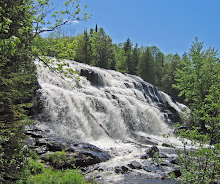 Just outside my barracks.
Just outside my barracks.





 The President's house, downtown Seoul.
The President's house, downtown Seoul. Seoul street scene.
Seoul street scene.
Back in the north, but it is still a strange place I find myself in.
On June 25, 1950, communist North Korea invaded the Republic of Korea. The ROK Army initially offered stiff resistance, but it lost vital battles north of Seoul and lost many men and important equipment when a bridge over the Han was prematurely blown in Seoul.
US defense spending had reached a modern day low after World War. The military was ill-prepared and those in authority embraced questionable doctrines. The usefulness of the tank in World War II had been lost to those in charge, and the Army had only a single armored division. The weaponry of World War II had not been significantly improved upon. The A-Bomb was seen as a serious deterrent to ANY enemy aggression.
In Japan, US occupation forces were prepared for quick shipment to Korea. A 540 man battalion sized task force of the 24th Infantry Division under Lt. Col. Charles Smith was rushed to Korea on transport planes and moved north through hordes of refugees and retreating ROK Army units to block the enemy advance. They were told the communists would flee at the sight of American soldiers.
Early on the morning of July 5th, Task Force Smith took up position a mile long just north of Osan on ridge 300 feet above the plain to the north. A platoon of B Company occupied a knob to the west of the road while the other two platoons as well as the two platoons of C Company occupied the ridge to the east. Two mortar platoons were 400 yards to the rear and five 105 mm howitzers were 2,000 yards to the rear.
At around 7:00 AM the approaching enemy was sighted, and at 8:16 the artillery began firing on the advancing enemy. Leading the North Korean advance was the 107th Armored Brigade equipped with T-34 tanks. Not bothering to deploy, the tanks advanced straight up the road toward the American position. Fire from two American 75 mm recoilless rifles did not damage the advancing T-34s. No anti-tank mines had been brought along, and anti-tank guns, a vital part of World War II armies, were no longer used. As the tanks continued, the Americans opened up with the 2.36 inch bazookas. These weapons were quickly obsolete in World War II and predictably could not penetrate the T-34s' frontal armor. They were even of questionable use against the weaker areas of the tanks. One of the 105 mm howitzers fired HEAT rounds as the tanks crested the ridge, and the front two tanks were disabled. The remaining 33 tanks continued down the road, firing as they went. The tanks tore up the communications wire as they went and bypassed the howitzers, whose rounds stopped only three of the T-34s.
Before noon, 1,000 men in two regiments of the North Korean 4th Division supported by three tanks deployed to attack the ridge. The Americans held off attacks to their front, but the enemy began moving around both flanks. At 12:30 PM, the North Koreans occupied a hill overlooking the American position west of the road, so the American platoon fell back to the east side. Running low on ammunition and with the enemy around both flanks, Smith ordered a withdrawal at 2:30. The retreat was confused and the guns were abandoned. Although they had inflicted 127 casualties, the task force suffered 181 casualties and was so scattered it would be largely ineffective. Over the coming months, additional US troops were sent to Korea, and the battle lines finally stabilized at the Pusan Perimeter, where UN troops fought off desperate human wave attacks. In September, landings at Inchon would turn the tide in favor of the UN.
The battle at Osan is a low point in American history. It symbolizes the price in blood our troops pay for ill preparedness and inadequate defense spending. During the 1980s many an Army leader has stated a policy of "No more Task Force Smiths.". Today however not many people outside of Korean vets have even heard of the battle. Are we better prepared now than we where then? Tactically, yes I think we are unfortunately strategically we are not better prepared. Our means are well thought out and planned for but the 'big picture' and the 'endgame' of conflict is not. Sadly in my neck of the Army the soldiers are not even prepared tactically. We lack the training and equipment to complete our mission in a wartime environment. Our chance of victory and our survivability would be very low.
 The original monument on the hill occupied by B Co. who took the worst of it.
The original monument on the hill occupied by B Co. who took the worst of it. The monument erected in 1982, nearby is a tree planted by BG(ret) Smith.
The monument erected in 1982, nearby is a tree planted by BG(ret) Smith.
 You can see the hill to the west that B Co occupied and then vacated as well as the hill and ridge line to the east that C Co and LTC Smith occupied. To the south is where the artillery was positioned. Just about as a good of a spot for a defense as any.
You can see the hill to the west that B Co occupied and then vacated as well as the hill and ridge line to the east that C Co and LTC Smith occupied. To the south is where the artillery was positioned. Just about as a good of a spot for a defense as any.

